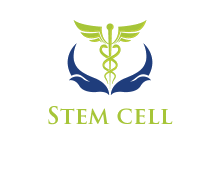


Types of Stem Cells

Embryonic stem cells (ES cells) are pluripotent stem cells derived from the inner cell mass of a blastocyst, an early-stage preimplantation embryo.
They are usually derived from a four- or five-day-old human embryo, at which time they consist of 50 -150 cells. The embryos are usually extras that have been created in IVF (In Vitro Fertilization) clinics where several eggs are fertilized in a test tube, but only one is implanted into a woman.
By using human ES cells to produce specialized cells like nerve cells or heart cells in the lab, scientists can gain access to adult human cells without taking tissue from patients. They can then study these specialized adult cells in detail to see what goes wrong in certain diseases, or to study how the cells respond to potential new drugs.
EMBRYONIC STEM CELLS

The process of extracting embryonic stem cells

Blastocyst under microscope

ADULT
STEM CELLS
Adult stem cells are undifferentiated cells found throughout the body that divide to replenish dying cells and regenerate damaged tissues. They can generate all the cell types of the organ from which they originate — potentially regenerating the entire organ from a few cells. Unlike embryonic stem cells, the use of adult stem cells in research and therapy is not controversial.
Adult stem cells can be isolated from a tissue sample obtained from an adult. Various types of adult stem cells have been identified in many organs and tissues. They range from cells that are able to form many different kinds of tissues to more specialized cells that form just some of the cells of a particular tissue or organ. Mesenchymal stem cells, for example, are adult stem cells that form fat cells, cartilage, bone, tendon, ligaments, muscle cells, skin cells and even nerve cells. In contrast, hematopoietic stem cells give rise to blood cells only (red cells, white cells and platelets), while neural stem cells form only cells in the nervous system.
Often confused with adult stem cell, progenitor cells are early descendants of stem cells that can differentiate to form one or more kinds of cells, but cannot divide and reproduce indefinitely.
Some tissues and organs have more adult stem cells than others. Those organs with fewer or no stem cells (the heart, for example) do not readily regenerate when they are injured or diseased.
Scientists around the world are actively studying ways to isolate different kinds of adult stem cells, to control and expand the rate at which they make copies of themselves, and to learn how to direct them to form the specific cell types needed for treatment, e.g. the first full transplant of a human organ grown from adult stem cells was carried out at the Hospital Clinic of Barcelona in 2008.


Injured cells chemically signal adult stem cells into the injured tissues by a process called “homing” or chemotaxis and they multiply by cell division to replenish dying cells and regenerate damaged tissues.









